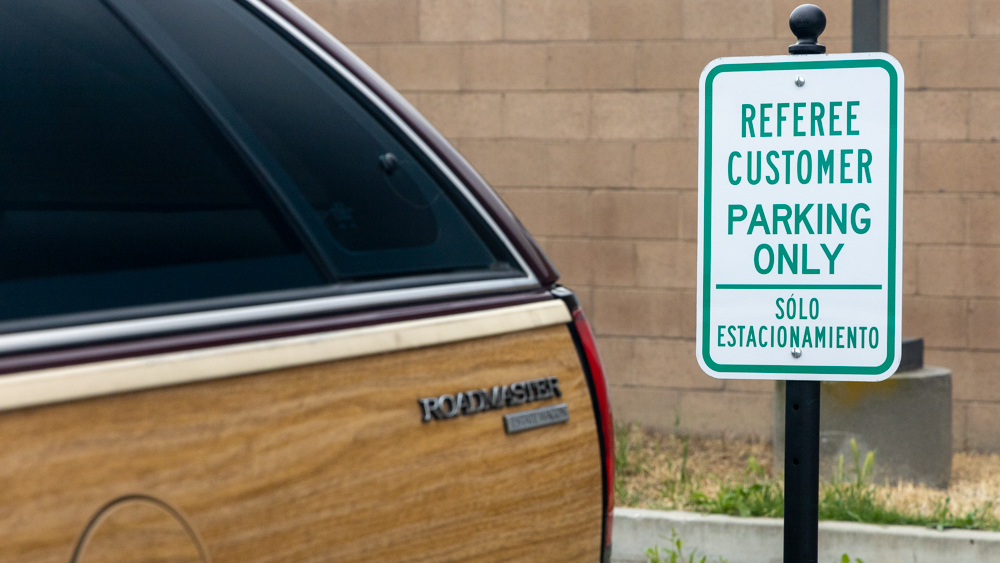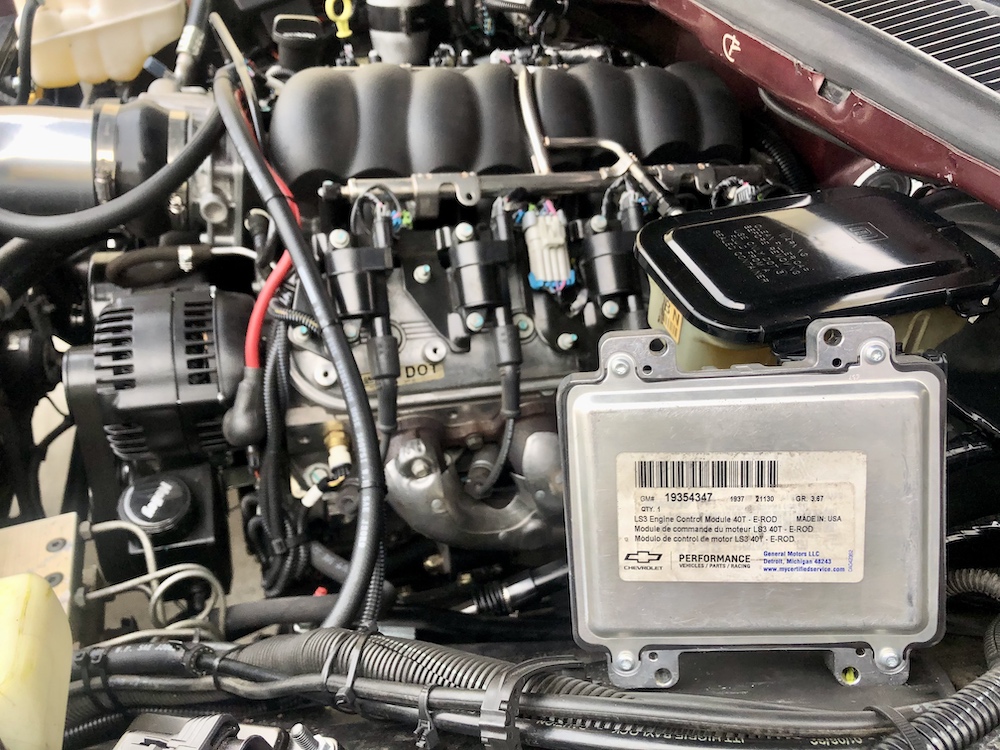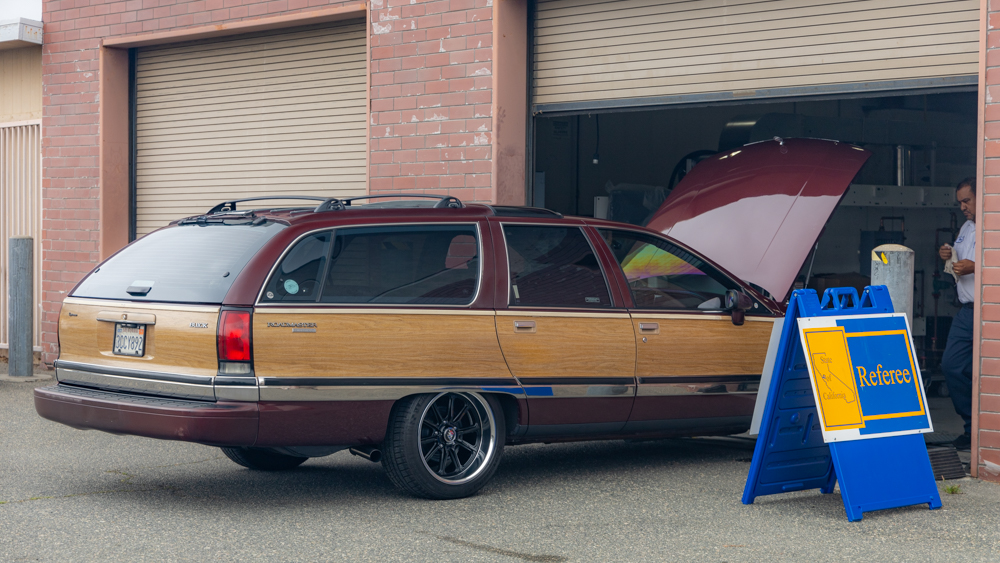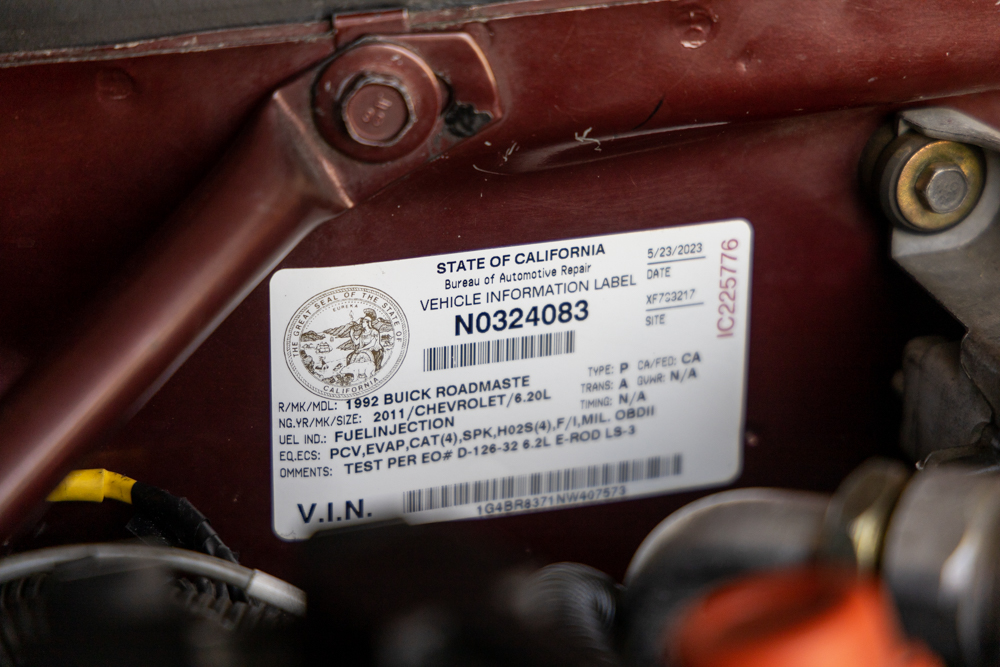How To Do a Legal California Engine Change (E-ROD LS Swaps & More!)
STEP 5: Virtual & In-Person BAR Referee Inspections

The final step of 50-state emissions compliance requires a two-part inspection. A virtual inspection where one submits all the documentation and photographic evidence demonstrating the swap’s validity. This is followed by a lengthy in-person inspection where BAR Referees inspect the vehicle and test its emissions.
To begin this process, call BAR at 1-800-622-7733 to request a virtual inspection for an engine change. You will need your VIN and license plate information.
Virtual Inspection

With an appointment on the books, BAR sends an email stating that you’ll be required to submit the following information —
- Registration/Renewal notice (If applicable)
- Repair receipts, installer check list, engine purchase receipt.
- Dealer invoice for PCM/ECM programming (If applicable).
- If 1996 and newer, needs software verification of donor engine
Worth noting, your vehicle may be disqualified if:
- Documents, including receipts, are not clear enough to read
- Vehicle has missing, modified, or disconnected equipment
HOWEVER, the above is frustratingly incomplete, so keep reading. Here’s a more complete list sent by BAR the morning of the virtual inspection (a list BAR should send the moment someone schedules an appointment).
For 1995 and older engine changes, submit the following —
- Picture of the ECU showing the part number (Non OBDII require consumer to VERIFY the engine and ECU are correct for donor vehicle.)
- Donor vehicle’s VIN number if available
- EO# for any aftermarket parts that require an EO# like engine change kits, catalytic converters, cold air intakes, superchargers.
- Pictures of the new engine installed from the front and left and right sides of the engine.
- The Check Engine Light, (MIL) or Service Engine Soon light must be functional if the donor vehicle required one.
With 1996-1999 engine changes, submit the following —
- An invoice containing the PCM/ECU part number and verifying in writing that the ECU/PCM is correct for the OEM application (Year, Make, Model and Engine) and verification that all OBDII system support and functionality is the same OEM configuration as the donor vehicle. The invoice needs to be from the manufacturer dealer or a licensed automotive repair dealer (ARD).
- Picture of the catalytic converter showing the numbers
- Picture of the ECU showing the numbers
- Vehicle registration
- Donor vehicle VIN
- Pictures of the engine installed, part numbers, and EO stickers of any parts that require an Executive Order numbers.
For 2000 and newer engine changes, submit the following —
- An invoice from the manufacturer dealer or licensed automotive repair dealer (ARD) verifying in writing that the ECM/PCM programming, functionality and CVN and Cal ID is correct for the donor vehicle.
- Picture of the ECU showing the numbers.
- Vehicle registration & Gross Vehicle Weight Rating of Recipient Vehicle (If A TRUCK).
- Donor vehicle VIN number
- Picture of the Correct Hood must be installed on vehicle per OEM specifications.
- Exhaust must match the donor vehicle configuration. Picture of a Dealer exhaust diagram is needed.
- Picture(s) of the catalytic converters on the vehicle.
- OBDII monitors set to ready or complete (Monitors Applicable to donor vehicle) And No Codes can be present in ECU/PCM.
In the case of the LS3 E-ROD, we submitted an invoice from Guaranty Chevrolet, a pdf copy of the Chevrolet Performance LS3 E-ROD installation instructions, a photograph of the ECU (pro-tip we learned the hard way: take this photo prior to installation), photos of the engine and catalytic converters installed, a photograph of the hood installed, and the vehicle registration card.
Using the E-ROD seemed to speed up the virtual inspection. The ref I spoke to, Richard, was friendly and a fellow enthusiast. He just wanted to make sure that I had followed the instructions completely.
On-Site BAR Referee Inspection

SMOG testing in California usually takes 20 minutes. This inspection takes 100 minutes. So buckle up. But the good news is that it only costs $8.25. Which may be the cheapest fee in the state for anything. And you only pay if/when you pass. Here’s the info BAR sends after making your on-site inspection appointment —
- Your appointment is 100 minutes long. Arrive 5 minutes early
- Associated fees: Smog check certificate $8.25, payable with Visa or MasterCard. No cash or checks
- Be sure your vehicle has enough coolant/water, oil & a functional gas cap, as well as a hood that closes securely
- No Pets. Service animals specifically trained to aid a disabled person are allowed to enter.
We had hoped to document this process more fully, but the Refs at Compton City College declined. (Which is understandable.) Two Refs then poured over the LS1Tech wagon project, inspecting everything multiple times, and coordinating with each other as well as off-site regional supervisors.

It took the wagon two attempts to earn its BAR Referee label. It passed all of the SMOG tests easily, mind you. But there was a NOS Window Activation Switch installed to prevent the Holley Mid Mount Accessory Drive A/C Compressor from operating above 4,000 RPM. The Refs also requested we move the mass airflow sensor three inches toward the center of the air intake pipe, and move some wiring to make the PCV system more visible to the Refs.
I respectfully contend that the three correctable issues had zero impact on any of the E-ROD’s emissions. But sometimes you can’t fight city hall. And to be fair, the NOS switch does say “race only” on Holley’s website, so my bad there. The bottom line, however, is that, if you follow the Chevrolet Performance E-ROD installation instructions EXACTLY, you will pass with no problem and end up with a 430 horsepower V8 monster that pollutes a lot less than anything made in the OBD I era.
Final Thoughts

California will never be a place where race-only parts are street-legal on 1976+ vehicles. (Sorry, longtube header fans). It’s also a place where emissions regulations, inspections, and enforcement are unnecessarily rigid and binary. In talking with industry experts, there are ways to make vehicles faster — ie, more efficient — and cleaner at the same time… that are ultimately denied an exemption and ruled illegal. This, unfortunately, pushes far too many enthusiasts and businesses into grey and black markets.
However, legal hot rodding and legal engine changes are still very much alive. It may take a little extra planning, money, and time. But it’s all very possible. We hope this guide proves helpful for future California hot rodders. Best of luck with your projects.
CHAPTERS
Intro / Background: CARB-Legal Modifications
1) Understanding California Engine Change Guidelines
2) Acquiring Emissions-Compliant Parts
3) Remove OEM Systems & Install Donor Systems
4) Project Break-in & Inspection Prep
5) Virtual & In-Person BAR Referee Inspections
Infographic Design: Pouria Savadkouei
Photos: Michael S. Palmer
